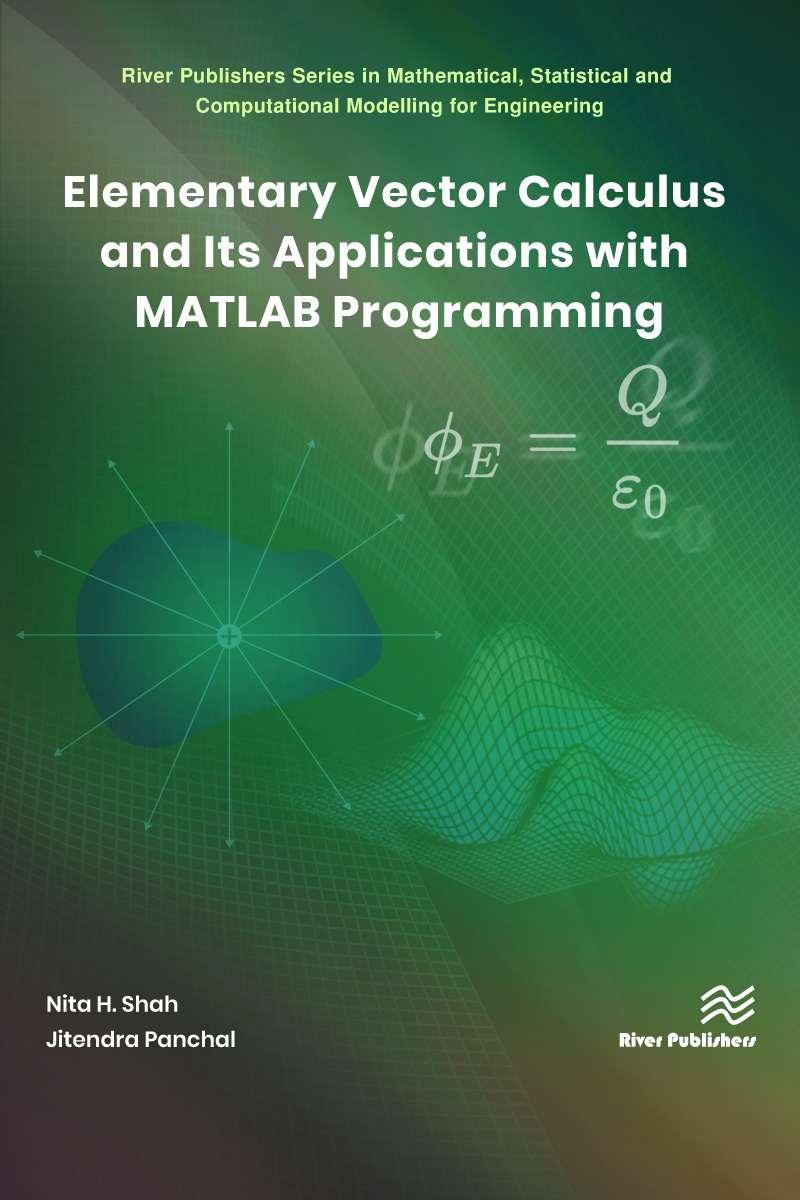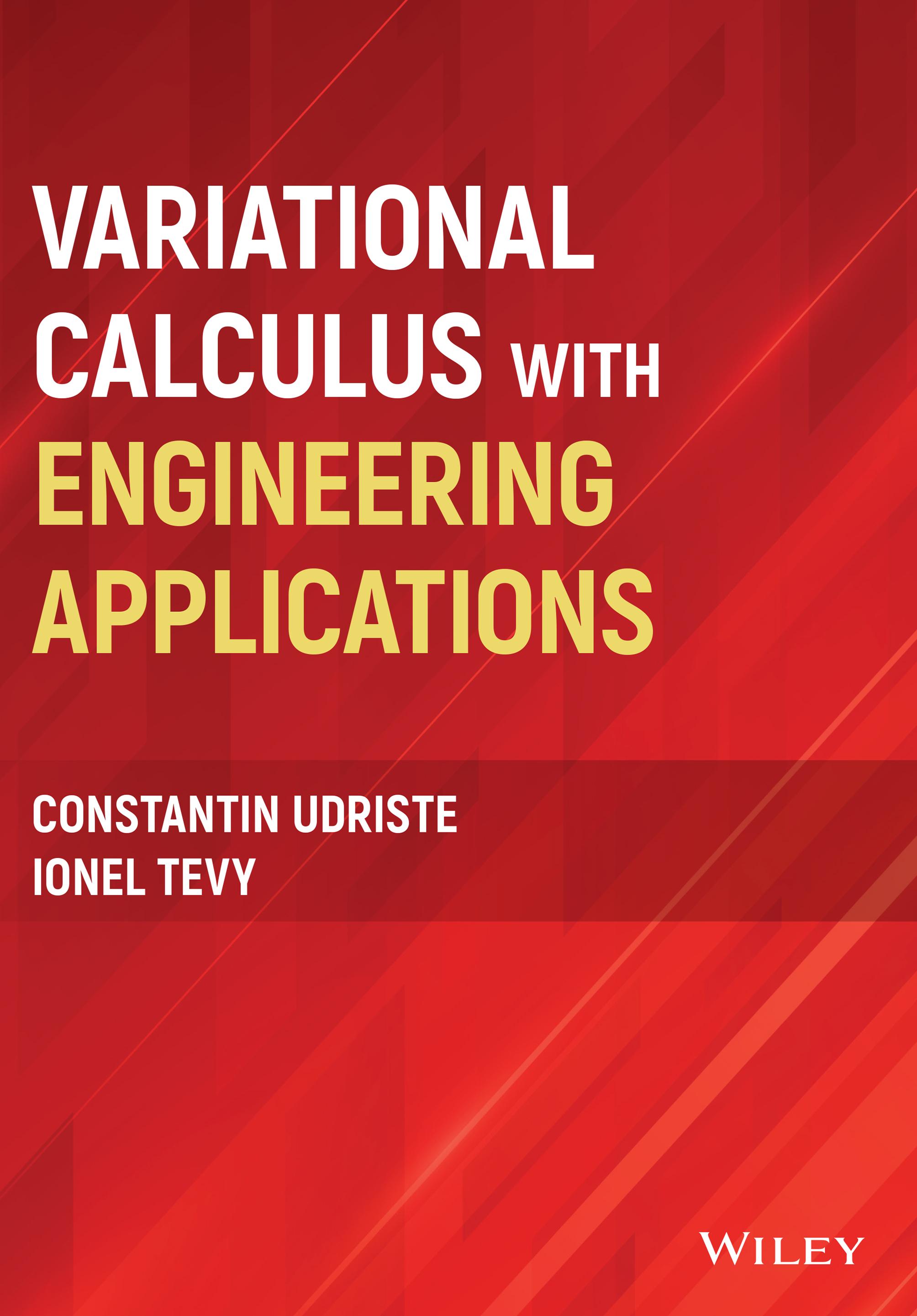USMLE Step 2 Secrets 5th
https://ebookmass.com/product/usmle-step-2-secrets-5th-editiontheodore-oconnell/
ebookmass.com
VariationalCalculuswithEngineeringApplications
Thiseditionfirstpublished2023 © 2023JohnWiley&SonsLtd
Allrightsreserved.Nopartofthispublicationmaybereproduced,storedinaretrievalsystem,or transmitted,inanyformorbyanymeans,electronic,mechanical,photocopying,recordingorotherwise, exceptaspermittedbylaw.Adviceonhowtoobtainpermissiontoreusematerialfromthistitleis availableat http://www.wiley.com/go/permissions.
TherightofConstantinUdristeandIonelTevytobeidentifiedastheauthorsofthisworkhasbeen assertedinaccordancewithlaw.
RegisteredOffice(s)
JohnWiley&Sons,Inc.,111RiverStreet,Hoboken,NJ07030,USA
JohnWiley&SonsLtd,TheAtrium,SouthernGate,Chichester,WestSussex,PO198SQ,UK
EditorialOffice(s)
9600GarsingtonRoad,Oxford,OX42DQ,UK
TheAtrium,SouthernGate,Chichester,WestSussex,PO198SQ,UK
Fordetailsofourglobaleditorialoffices,customerservices,andmoreinformationaboutWileyproducts visitusat www.wiley.com.
Wileyalsopublishesitsbooksinavarietyofelectronicformatsandbyprint-on-demand.Somecontent thatappearsinstandardprintversionsofthisbookmaynotbeavailableinotherformats.
LimitofLiability/DisclaimerofWarranty
Whilethepublisherandauthorshaveusedtheirbesteffortsinpreparingthiswork,theymakeno representationsorwarrantieswithrespecttotheaccuracyorcompletenessofthecontentsofthiswork andspecificallydisclaimallwarranties,includingwithoutlimitationanyimpliedwarrantiesof merchantabilityorfitnessforaparticularpurpose.Nowarrantymaybecreatedorextendedbysales representatives,writtensalesmaterialsorpromotionalstatementsforthiswork.Thefactthatan organization,website,orproductisreferredtointhisworkasacitationand/orpotentialsourceoffurther informationdoesnotmeanthatthepublisherandauthorsendorsetheinformationorservicesthe organization,website,orproductmayprovideorrecommendationsitmaymake.Thisworkissoldwith theunderstandingthatthepublisherisnotengagedinrenderingprofessionalservices.Theadviceand strategiescontainedhereinmaynotbesuitableforyoursituation.Youshouldconsultwithaspecialist whereappropriate.Further,readersshouldbeawarethatwebsiteslistedinthisworkmayhavechanged ordisappearedbetweenwhenthisworkwaswrittenandwhenitisread.Neitherthepublishernor authorsshallbeliableforanylossofprofitoranyothercommercialdamages,includingbutnotlimitedto special,incidental,consequential,orotherdamages.
AcataloguerecordforthisbookisavailablefromtheLibraryofCongress
HardbackISBN:9781119944362;ePDFISBN:9781119944379;epubISBN:9781119944386; oBookISBN:9781119944423
Coverimage: © enjoynz/GettyImages
CoverdesignbyWiley
Setin9.5/12.5ptSTIXTwoTextbyIntegraSoftwareServicesPvt.Ltd,Pondicherry,India
3 Optimal Models Based on Energies 53
3.1 Brachistochrone Problem 53
3.2 Ropes, Chains and Cables 55
3.3 Newton’s Aerodynamic Problem 56
3.4 Pendulums 59
3.4.1 Plane Pendulum 59
3.4.2 Spherical Pendulum 60
3.4.3 Variable Length Pendulum 61
3.5 Soap Bubbles 62
3.6 Elastic Beam 63
3.7 The ODE of an Evolutionary Microstructure 63
3.8 The Evolution of a Multi-Particle System 64
3.8.1 Conservation of Linear Momentum 65
3.8.2 Conservation of Angular Momentum 66
3.8.3 Energy Conservation 67
3.9 String Vibration 67
3.10 Membrane Vibration 70
3.11 The Schrödinger Equation in Quantum Mechanics 73
3.11.1 Quantum Harmonic Oscillator 73
3.12 Maple Application Topics 74
4 Variational Integrators 79
4.1 Discrete Single-time Lagrangian Dynamics 79
4.2 Discrete Hamilton’s Equations 84
4.3 Numeric Newton’s Aerodynamic Problem 87
4.4 Discrete Multi-time Lagrangian Dynamics 88
4.5 Numerical Study of the Vibrating String Motion 92
4.5.1 Initial Conditions for Infinite String 94
4.5.2 Finite String, Fixed at the Ends 95
4.5.3 Monomial (Soliton) Solutions 96
4.5.4 More About Recurrence Relations 100
4.5.5 Solution by Maple via Eigenvalues 101
4.5.6 Solution by Maple via Matrix Techniques 102
4.6 Numerical Study of the Vibrating Membrane Motion 104
4.6.1 Monomial (Soliton) Solutions 105
4.6.2 Initial and Boundary Conditions 108
4.7 Linearization of Nonlinear ODEs and PDEs 109
4.8 Von Neumann Analysis of Linearized Discrete Tzitzeica PDE 113
4.8.1 Von Neumann Analysis of Dual Variational Integrator Equation 115
4.8.2 Von Neumann Analysis of Linearized Discrete Tzitzeica Equation 116
4.9 Maple Application Topics 119
5 Miscellaneous Topics 123
5.1 Magnetic Levitation 123
5.1.1 Electric Subsystem 123
7.5SimpleIntegralFunctionalswithODEConstraints 175
7.6SimpleIntegralFunctionalswithNonholonomicConstraints 181
7.7SimpleIntegralFunctionalswithIsoperimetricConstraints 184
7.8MultipleIntegralFunctionalswithPDEConstraints 186
7.9MultipleIntegralFunctionalsWithNonholonomicConstraints 188
7.10MultipleIntegralFunctionalsWithIsoperimetricConstraints 189
7.11CurvilinearIntegralFunctionalsWithPDEConstraints 191
7.12CurvilinearIntegralFunctionalsWithNonholonomicConstraints 193
7.13CurvilinearIntegralFunctionalswithIsoperimetricConstraints 195
7.14MapleApplicationTopics 197
Bibliography 203 Index 209
Preface
TheVariationalCalculuswithEngineeringApplicationswasandisbeingtaughtto fourth-yearengineeringstudents,intheFacultyofAppliedSciences,Mathematics-InformaticsDepartment,fromtheUniversityPolitehnicaofBucharest,byProf.EmeritusDr. ConstantinUdriste.Certaintopicsaretaughtatotherfacultiesofouruniversity,especiallyasmaster’sordoctoralcourses,beingpresentinthepapersthatcanbepublished injournalsnowcategorizedas“ISI”.
Thechapterswerestructuredaccordingtotheimportance,accessibility,andimpactof thetheoreticalnotionsabletooutlineafuturespecialistbasedonmathematicaloptimizationtools.Theprobingandintermediatevariantslastedforanumberofsixteenyears, leadingtotheselectionofthemostimportantmanageablenotionsandreachingmaturity throughthisvariantthatwedecidedtopublishatWiley.
Nowthetopicsofthebookincludesevenchapters:ExtremaofDifferentiableFunctionals;VariationalPrinciples;OptimalModelsBasedonEnergies;VariationalIntegrators; MiscellaneousTopics;ExtremalswithNonholonomicConstraints;Problems:Freeand ConstrainedExtremals.Tocovermodernproblem-solvingmethods,eachchapterincludes Mapleapplicationtopics.Thescientificauthoritywehaveasprofessorsintechnicaluniversityhasallowedustoimposeourpointofviewonthesubjectandonthetypesof reasoningthatdeservetobeofferedtoreadersofvariationalcalculustexts.Everything hasbeenstructuredforthebenefitoffunctionaloptimizationthatdescribessignificant physicalorengineeringphenomena.Tounlockthestudents’mindswepreferredasimplifiedlanguage,specifictoappliedmathematics,sendingreadersofpuremathematicstothe bibliography.Longexperienceasmathematicsteachersintechnicaluniversitieshaspreparedustofluentlyexposeideasundressedbyexcessiveformalizations,withgreatimpact onthestudents’understandingofthenaturalphenomenaencounteredinengineeringand economicsaswellastheirdressinginmathematicalclothing.Inthissense,wepreferred mathematicalmodelingasascientificsupportforintelligentpresentationoftherealworld andweavoidedthehintofabstractnotionsspecifictopuremathematics.
Topicsthatdistinguishthisbookfromexistingbooksinclude:Mapleapplicationtopics,invexitytests,caseofpath-independentcurvilinearintegralfunctionals,variational integrators,discretizationofHamiltonODEs,numericalstudyofvibratingstringmotion, numericalstudyofvibratingmembranemotion,linearizationofnonlinearODEsand
ExtremaofDifferentiableFunctionals
Motto: “Iwrotethemwithmynailontheplaster
Onawallofemptycracks, Inthedark,inmysolitude, Unaidedbythebulllionvulture ofLuke,MarkandJohn.” TudorArghezi– FlowersofMildew
Variationalcalculusaimstogeneralizetheconstructionsofclassicalanalysis,tosolveextrema problemsforfunctionals.Inthisintroductorychapter,wewillstudytheproblemofdifferentiablefunctionalsdefinedonvariousclassesoffunctions.Thenewsreferstopathintegral functionals.Fordetails,see[4, 6, 7, 8, 14, 18, 21, 30, 58].
1.1DifferentiableFunctionals
Letusconsiderthepoint ��=(��1,��2,...,����) andthefunction ��∶��⊂ R�� → R, ��↦��(��). Ifthisfunctionhascontinuouspartialderivativeswithrespecttoeachofthevariables ��1,��2,...,����,thenincreasingtheargumentwith ℎ=(ℎ1,ℎ2,...,ℎ��) produces ��(��+ℎ)−��(��)= ��
��,ℎ).
Thefirsttermontheright-handsiderepresentsthedifferentialofthefunction �� atthe point ��,alinearformofargumentgrowth,thevector ℎ;thesecondtermisthedeviation fromthelinearapproximationandissmallinrelationto ℎ,inthesensethat lim ℎ→0 ��(��,ℎ) ‖ℎ‖ =0.
Let ��,�� betwonormedvectorspaces.Thepreviousdefinitioncanbeextendedimmediatelytothecaseoffunctions ��∶��⊂��→��.If �� isaspaceoffunctions,and ��= R, theninsteadoffunctionweusetheterm functional
VariationalCalculuswithEngineeringApplications,FirstEdition.ConstantinUdristeandIonelTevy. © 2023JohnWiley&SonsLtd.Published2023byJohnWiley&SonsLtd.
where ��0 isafixedpoint;(ii)definiteintegration(functionaldefinedbydefiniteintegral); (iii)numericalquadraturedefinedbydefiniteintegration:
where ���� meansthesetofallpolynomialsofdegreeatmost ��;and(iv)distributionsin analysis(aslinearfunctionalsdefinedonspacesoftestfunctions).Wewillcontinueto dealwithdefiniteintegraltypefunctionals,asthereasoningismorefavorabletous.
Example1.2: Letusconsiderthefunctional
definedonthespace ��0[��,��] ofthecontinuousfunctionsonthesegment [��,��],endowed withthenormofuniformconvergence.TheLagrangianofthefunctional(i.e.,thefunction ��(��,��))ispresumedcontinuousandwithcontinuouspartialderivativesofthefirstorderin thedomain ��≤��≤��, −∞<��<+∞.
Letusdeterminethevariationofthefunctional ��(��(⋅)) whentheargument ��(��) increases with ℎ(��):
SincetheLagrangian �� isadifferentiablefunction,wehave
(��,��+ℎ)−��(��,��)=
Therefore
Inthisway,accordingtothepreviouspropositionandthederivationformulaforintegrals withparameters,wefind
Example1.3: Letusconsiderthefunctional
(��(⋅))=∫
(��,��(��),��′(��))����,
definedonthespace��1[��,��]offunctionswithacontinuousderivativeonthesegment[��,��], endowedwiththenormofuniformconvergenceofderivatives.TheLagrangian��(��,��,��)ofthe functionalissupposedtohavefirst-ordercontinuouspartialderivatives.Towritetheintegral functional,weuseinfactthepullbackform ��(��,��(��),��′(��)) oftheLagrangian.
Applyingthederivationformulaoftheintegralswithparameterweobtain
Analogously,wecanextendtheresulttothefunctional
definedonthespace ����[��,��] offunctionswithcontinuousderivativesuptotheorder �� inclusive,onthesegment [��,��].Inthiswaywehave
Example1.4: Letusconsiderafunctionalwhichdependsonseveralfunctionvariables,for example
(��1(⋅),...,����(⋅))=
definedonthespace (��1[��,��])��,whoseelementsarevectorfunctions ��(��)= (��1(��),...,����(��)),��∈[��,��],withthenormofuniformconvergenceofderivatives ‖��‖=max ��∈[��,��] [|��
(�� meansthederivativewithrespectto ��).
SupposingthattheLagrangian �� hascontinuouspartialderivatives,denoting ℎ(��)= (ℎ1(��),...,ℎ��(��)),thevariationofthefunctional �� is ����(��,ℎ)=∫ �� �� [
(sumovertheindex ��).
Now,letusconsiderfunctionalswhoseargumentsarefunctionsofseveralrealvariables.
Example1.5: Let Ω ⊂ R2 beacompactdomain.Asanexamplewewilltake,first,the doubleintegralfunctional
wherewenotedforabbreviation
Thefunctionalisdefinedonthespace ��1(Ω) ofallfunctionswithcontinuouspartialderivatives;thenormofthespace ��1(Ω) isgivenby
SupposingthattheLagrangian �� hascontinuouspartialderivatives,thevariationofthe functional ��,astheargument �� growswith ℎ(��,��),is
Example1.6: Anotherexampleisthecurvilinearintegralfunctional
where Γ isapiecewise ��1 curvewhichjoinstwofixedpoints ��,�� inacompactdomain Ω⊂ R2 . Supposetheargument ��(��,��) growswith ℎ(��,��).Thenthevariationofthefunctionalis
1.2ExtremaofDifferentiableFunctionals
Letusconsiderthefunctional ��∶��⊂��→ R,definedonasubset �� ofanormedvector space �� offunctions.Bydefinition,thefunctional �� hasa (relative)minimum atthepoint ��0 in ��,ifthereexistsaneighborhood ��,ofpoint ��0,suchthat
��.
Ifthepoint ��0 hasaneighborhood �� onwhichtheoppositeinequalitytakesplace
(��0)≥��(��), ∀��∈��∩��,
wesaythat ��0 isapointof localmaximum forthefunctional ��.Theminimumand maximumpointsarecalled relativeextrema points.
Inclassicalanalysis,theextremapointsofadifferentiablefunctionareamongthecritical points,thatis,amongthepointsthatcancelsfirst-orderderivatives.Asimilarproperty occursinthecaseoffunctionalonesonnormedvectorspacesoffunctions,onlyinthis casetheextremapointsarefoundbetweentheextremals(criticalpoints).
Proposition1.2: Ifthefunction�� isanextremumpointforthefunctional��,interiorpoint oftheset �� andif �� isdifferentiableatthispoint,then ����(��,ℎ)=0 foranygrowth ℎ
Proof. Letℎbeagrowthoftheargument��(function);since��isaninteriorpointoftheset ��,thefunction��(��+��ℎ)ofrealvariable�� isdefinedonholeinterval[−1,1].Thisfunction hasanextremumpointat �� =0 andisderivableatthispoint.Thenitsderivativemust vanishat ��=0.Itfollows ����(��,ℎ)=���� ����(
Anypoint �� atwhichthevariation ����(��,ℎ) ofthefunctional �� iscanceledidentically withrespectto ℎ iscalledeitherthe stationarypoint or criticalpoint or extremal ofthe functional.
Hence, forestablishingtheextremapointsofafunctional,thevariation ����(��,ℎ) mustbe expressed,determinethecriticalpoints(thoseatwhichthevariationiscanceledidentically withrespectto ℎ)andthenchoosefromthesetheminimumpointsorthemaximumpoints.
CommentaryThevariation����(��,ℎ)ofthefunctional��isacontinuouslinearfunctional onthenormedvectorspace �� onwhichisdefined ��.Theset ��∗ ofallcontinuouslinear functionalson �� iscalled dualspace.Thustheevaluationofthevariationofafunctional imposestheexistenceofsomerepresentationtheoremsforthedualspace.
Forexample,foranylinearfunctional��∶ R�� → Rthereexistsavector��=(��1,...,����)∈ R�� suchthat
��(ℎ)=��1ℎ1+ +����ℎ�� =⟨��,ℎ⟩, ∀ℎ∈ R��
Also,anycontinuousandlinearfunctional��∶��0[��,��]→ R,onthespaceofcontinuous functions,canbewrittenintheform
��(ℎ)=∫ �� �� ℎ(��)������(��),
where ���� isafunctionwithboundedvariationandcontinuousattheright(F.Riesz’s Theorem).
Todeterminetheextremapoints,weneedtheidenticalcancelationofthefirstvariation. Forthatweuse
Lemma1.1: (Fundamentallemmaofvariationalcalculus) Let �� bearealcontinuousfunctionontheinterval[��,��].Ifforanycontinuousfunctionℎ,vanishingat�� and��,the equality
�� ��(��)ℎ(��)����=0, istrue,then ��(��)=0, ∀��∈[��,��]
Proof. Supposethereexistsapoint ��0 ∈[��,��] atwhich ��(��0) ≠ 0.Let ��(��0) > 0.Then thereexistsaneighborhood �� =(��0 ��,��0 +��) of ��0 where ��(��) > 0.Letusconsider acontinuousfunction ℎ,strictlypositiveontheneighborhood �� andnulloutsideit(for example, ℎ(��)=(�� ��0+��)(��0+�� ��) for ��∈��).Then
�� �� ��(��
whichcontradictsthehypothesisandconcludestheproofofthelemma.
Remark1.1: 1)Forthesetofcontinuousrealfunctions ��0[��,��],theintegral ⟨��,��⟩ =
�� �� ��(��)ℎ(��)���� isascalarproduct.Consequently,
implies ��(��)=0.
2)Thesetoffunctions ℎ youneedforcheckingtheequalityinthelemmacanoften bereduced.Ascanbeseenfromtheproofofthefundamentallemma,wecanimpose derivabilityconditionsofanyordertothefunctions ℎ andcancelationattheendofthe intervaletc.Itisessentialthatforany �� ∈[��,��] andany ��> 0 toexist,inthesetof testfunctions,astrictlypositivefunctionontheinterval (��0 ��,��0 +��) andnullfunction otherwise.
3)Inasimilarwording,thefundamentallemmaofthevariationalcalculusremainsin forceforfunctionsofseveralvariables.
Returningtotheproposedproblem,letusnote
(��)=��(��)−(��0+��1��+ +����−1
)
anddeterminethecoefficients ��0,��1,...����−1 sothatthefunction �� verifiestheequalitiesof theproperty (��)
TheorthogonalizationpropertiesinaEuclideanvectorspaceensurethepossibilityof thisdetermination.Thenwecantake ℎ(��) =�� andget
Theresultis ��(��)=0, ∀��∈[��,��],i.e., �� isapolynomialofdegreeatmost ��−1.
Remark1.2: Thepreviousresultillustratesonaconcretesituationtheequality ��⊥⊥ = ��,foranyclosedsubspaceofaHilbertspace.
Letusexaminethedetectionofcriticalpoints(extremals)forthefunctionalswhose variationsweredeterminedintheprevioussection.
Example1.7: Obviously,anonzerocontinuouslinearfunctional �� ∶ �� → R hasno criticalpoints.
Example1.8: Forthefunctionalsoftype
(��())=∫
(��,��(��))����, thevariationisgivenbyformula(1).Then,applyingthefundamentallemmaweobtain
(7)
Equation(7)canbesolved,accordingtotheimplicitfunctiontheorem,obtainingsolutions ��=��(��),aroundthepoints (��0,��0) atwhich
Example1.9: Aspecialplace,genericinthevariationalcalculus,hasthefunctional
where �� isa ��2 Lagrangian.Thevariationofthisfunctionalisgiveninformula(2):
Toevaluate
Takingthederivativewithrespectto �� andsetting ��=0,weobtain
Then,afteranintegralbypartsandselecting ℎ(��)=0,wefind
Sincethevariation ℎ isarbitrary,weobtain,theEuler–LagrangeODE(8)andthenthe transversalitycondition
,i.e.,theextremalandthecurve ��=��(��) aretransversalatcontactpoint.)
Obviously,iftheleftendoftheextremalgraphisvariableonagivencurve��=��(��),wewill haveatthisendaswellasimilarconditionoftransversality
1ExtremaofDifferentiableFunctionals
Theresultsextendtofunctionalwithhigher-orderderivatives,
startingfromtheexpression(3)ofvariation.Integratingbypartsseveraltimesandusingthe fundamentallemma,theEuler–Lagrangeequationtakestheshape
anODEoforderatmost 2��,withunknown ��(��).
Example1.10: Forafunctionalthatdependonseveralfunctionvariables
theextremals ��
aresolutionsofEuler–Lagrangesystem
Theproblemstowhichtheextremalsareconstrainedattheendsoftheintervalareposedand solvedasinthepreviouscase.
Example1.11: Incaseofdouble(multiple)integralfunctional
thevariationisgivenbytherelation(5).IntegratingbypartsandusingGreenformulawe obtain
where ��Ω representstheboundaryof Ω Ifthefunction �� isanextremumpoint,wemusthave ����(��,ℎ)=0,identicallywith respectto ℎ.Consideringthatwehavenullvariations ℎ ontheboundary ��Ω,weapplythe
Wewillhavetodistinguishtwosituationsasintegralistakenonafixedcurveortheintegral ispath-independent.Wewillmake,forabbreviation,thefollowingnotations:
1,����2).
a)IfthecurvilinearintegralistakenonafixedpathΓ∶��=��(��),��=��(��),and��=(��,��) isthevelocityfieldofthecurve,theconditionofcriticalpointistheorthogonalityon Γ ofthe vectorfield ���� and ��,i.e.,
b)Ifthecurvilinearfunctionalispath-independent,theconditionofcriticalpoint(13)must besatisfiedforanyvector ��=(̇ ��, ̇ ��) andthenweobtainthePDEssystem
withtheunknownfunction ��(��,��).
1.3SecondVariation;SufficientConditionsforExtremum
Thethirdstepinsolvingvariationalproblemsisthechoicebetweenthecriticalpointsof thosewhoactuallyachieveanextremum.Inconcretesituations,comingfromgeometry, physics,engineeringoreconomics,therealizationofextremaisimposedbythenatureof theproblem.
Theoreticallyspeaking,weneedtofindsufficientconditionsforextremum.Tothisend wedefinethesecondvariationofafunctional.
Letusgobacktothedefinitionofdifferentiability,Definition1.1,andsupposethatthe function�� isderivableoveritsentiredomainofdefinition��.Thenthederivativeoperator ����(��, ) becomesafunctionbetweentwonormedspaces
��(⋅ , ⋅)∶��⊂��→ℒ(��,��),��↦����(��,⋅), where ℒ(��,��) isthenormedspaceoflinearboundedoperatorsfrom �� to ��.Ifthisfunctionisdifferentiableatapoint ��∈��,thederivativeat �� ofthefunction ���� iscalled the secondderivativeofthefunction �� atthepoint ��.Thesecondderivativeisabilinearand continuousoperatorfrom ��×�� to �� or,byidentifyingvariations,aquadraticoperator. Specifically,inthecaseofthefunctionalswedealtwithpreviously,wehavethefollowing results.
1.3SecondVariation;SufficientConditionsforExtremum 15
Definition1.2: Ifthevariation ����(��,ℎ) isdifferentiableasfunctionof ��,itsvariation ��(����(��,ℎ))(��) iscalledthesecondvariationofthefunctional �� andisdenotedby ��2��(��;ℎ,��)
Proposition1.3: Ifthefunctional �� istwicedifferentiable,then ��2��(��;ℎ,ℎ)= ��2 ����2 ��(��+��ℎ)| | | | |��=0 .
Ontheotherhandsupposethatthedeviationfromthelinearapproximation, ��(��,ℎ), smallrelativeto ℎ,canbeapproximatedwithasquareoperator,i.e., ��(��,ℎ)=��(ℎ,ℎ)+��1(��,ℎ), lim ℎ→0 ��1(��,ℎ) ‖ℎ‖2 =0, where �� isasymmetricbilinearoperator.Thenthefollowingpropertyholds: Second-orderTaylorformula Wehavetheequality ��(ℎ,ℎ)=1 2 ��2��(��;ℎ,ℎ) andconsequently
△��(��(⋅))=��(��+ℎ)−��(��)=����(��,ℎ)+1 2 ��2��(��;ℎ,ℎ)+��1(��,ℎ)
Nextwewillabbreviate ��2��(��;ℎ,ℎ) by ��2��(��,ℎ) If �� isacriticalpoint(anextremal),i.e., ����(��,ℎ)=0,thenatureofthecriticalpointis givenbythequadraticfunction ��2��(��,ℎ).Asinthecaseofrealfunctionsofrealvariables, itholdsthefollowing
Theorem1.1: a)Necessarycondition Iftheextremal �� isaminimumpointofthe functional ��,then ��2��(��,ℎ)≥0 forany ℎ b)Sufficientcondition Iffortheextremal �� thecondition ��2��(��,ℎ)>��‖ℎ‖2 (��>0 ����������) holdsforany ℎ,then �� istheminimumpointforthefunctional ��
Remark1.3: Conditionb)cannotbeweakenedby ��2��(��,ℎ) > 0.Forinstance,ifwe considerthefunctional ��(��(⋅))=∫ 1 0 ��2(��)(�� ��(��))���� onthespace ��0[0,1],thenthenullfunction ��(��)=0,∀��∈[0,1],isacriticalpointand ��2��(��=0,ℎ)=∫ 1 0 2��ℎ2(��)����>0






